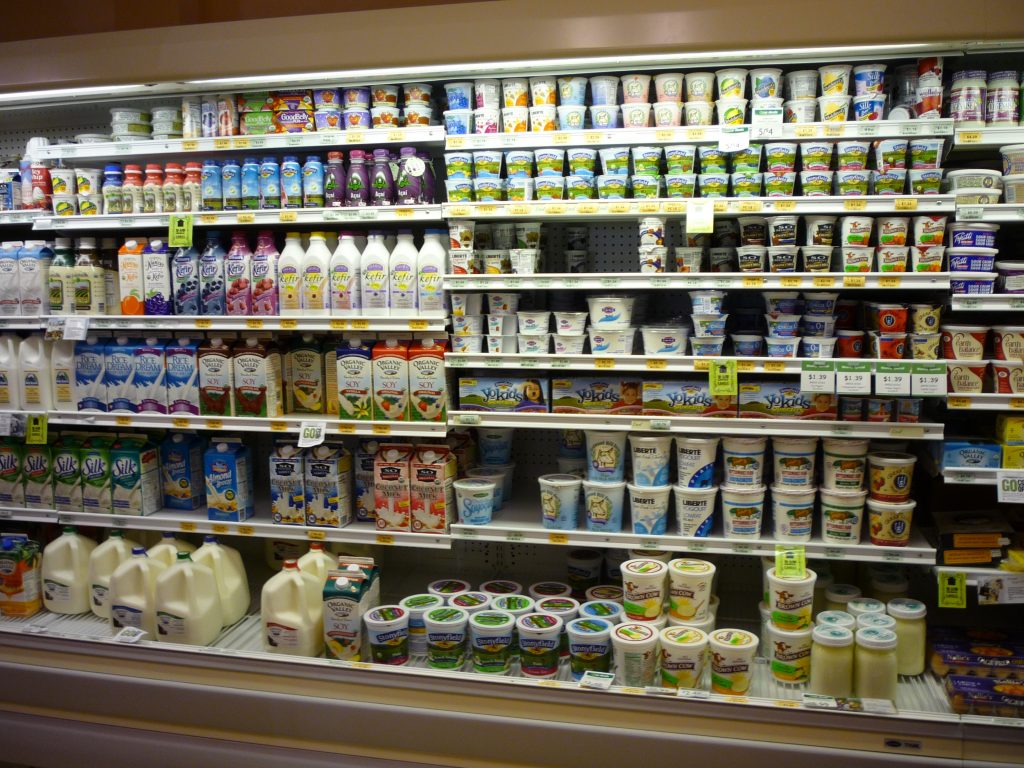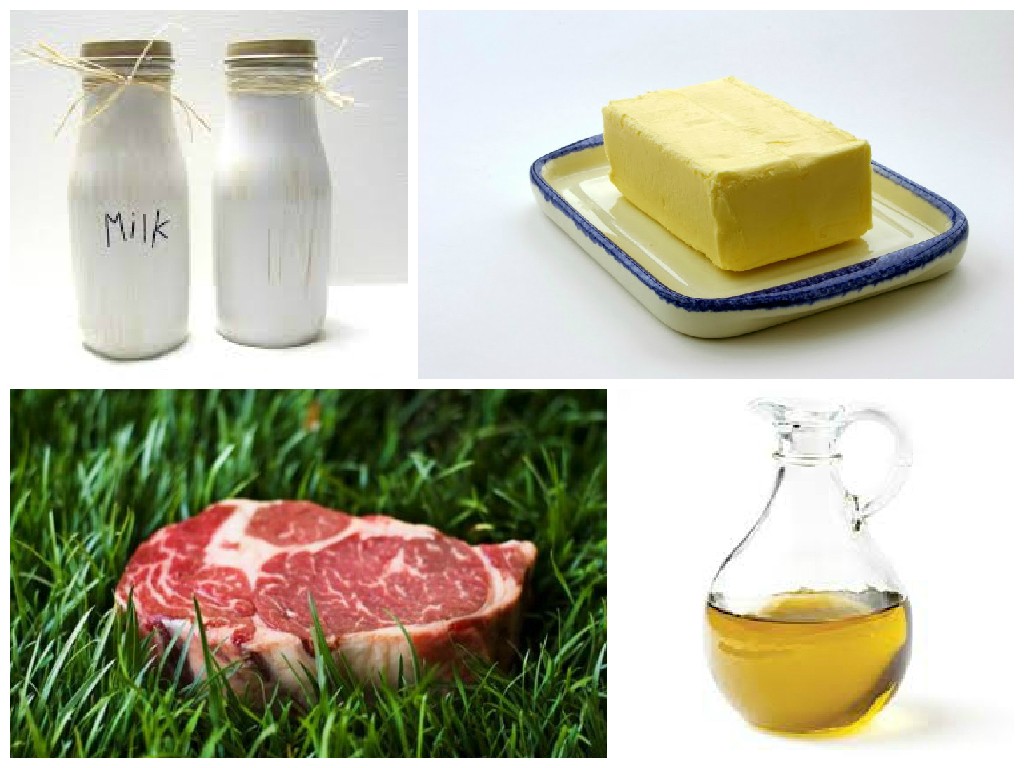JOIN OUR NEXT CLASS: “Raise Your Food IQ”; $25
Produce: Use this chart to decide which produce you should start buying organic today: Dirty Dozen. Buying organic “dirty dozen” produce will make the most impact in cleaning up your diet (and help support an environmentally-friendly agricultural system).
GMOs: You can only avoid GMOs (genetically-modified organisms) when you buy organic food, which is the only certified labeling that means “non-GMO.” The US is woefully behind the times in having no GMO labeling laws. GMOs have a much higher chemical-residue levels because most are modified to resist heavy herbicide applications, which can be applied to the crops without damaging it. Nonetheless, the plant still absorbs it and passes that chemical dose on to you.
Dairy: “Skim” milk is processed food. The fat is removed by centrifugal force and then nonfat dry milk powder (extra lactose, i.e. sugar) is added back in to make it palatable and look more like regular milk. The fat is not “skimmed off” as might be implied. Stay away from “low-fat” processed foods, and look for lower-fat whole foods.
Eggs: Brown eggs are not healthier than white eggs. The color of the shell indicates the breed of chicken that laid the egg. The freshest eggs are found at a farmer’s market, or a neighbor’s chicken coop.
Meat: “Pasture-raised” and “grass-fed” are terms that mean something significant when it comes to the quality of the meat you are buying. It indicates that the animal roams freely and is able to have access to its own food source (in addition to being supplemented by the farmer). Animals that eat green plants (grass, weeds, seaweed/algae for wild fish), have a high concentration of omega-3s in their meat; a very good thing. The terms “cage-free,” “free-range,” and “all-natural” all mean virtually nothing these days.
Sugar: The less you eat, the better. Don’t worry about naturally-occurring sugars in dairy and fruit, but make sure to check the “added sugar” line item on packages of healthy-sounding granola, flavored yogurts, and fruit juices/smoothies. 4 grams = 1 teaspoon sugar. That said, when you eat dessert, enjoy it. But don’t mistakenly eat dessert all day long, with soda, sweet cereals, and smoothies.
Food labels: Read the ingredient list first. If you can buy all of the ingredients in the grocery store, chances are it’s a good food choice (i.e. you can’t buy carrageenan or dextrose or nitrites in the grocery store).
Real food: Foods that don’t require a nutritional analysis (i.e. not processed or packaged) are always a good choice.
Farmer’s markets: Here is what you should always buy at the farmer’s market: eggs, meat, seasonal and heirloom fruits and vegetables. There is no better place to get them.
Whole grains: They take longer to digest than “simple” grains, like white flour and white rice, and keep you feeling satisfied/fuller longer. Make sure you balance your diet with some whole grains (brown rice, farro, quinoa, oats) if you find yourself enjoying a lot of white bread and rice (which is certainly enjoyable).



